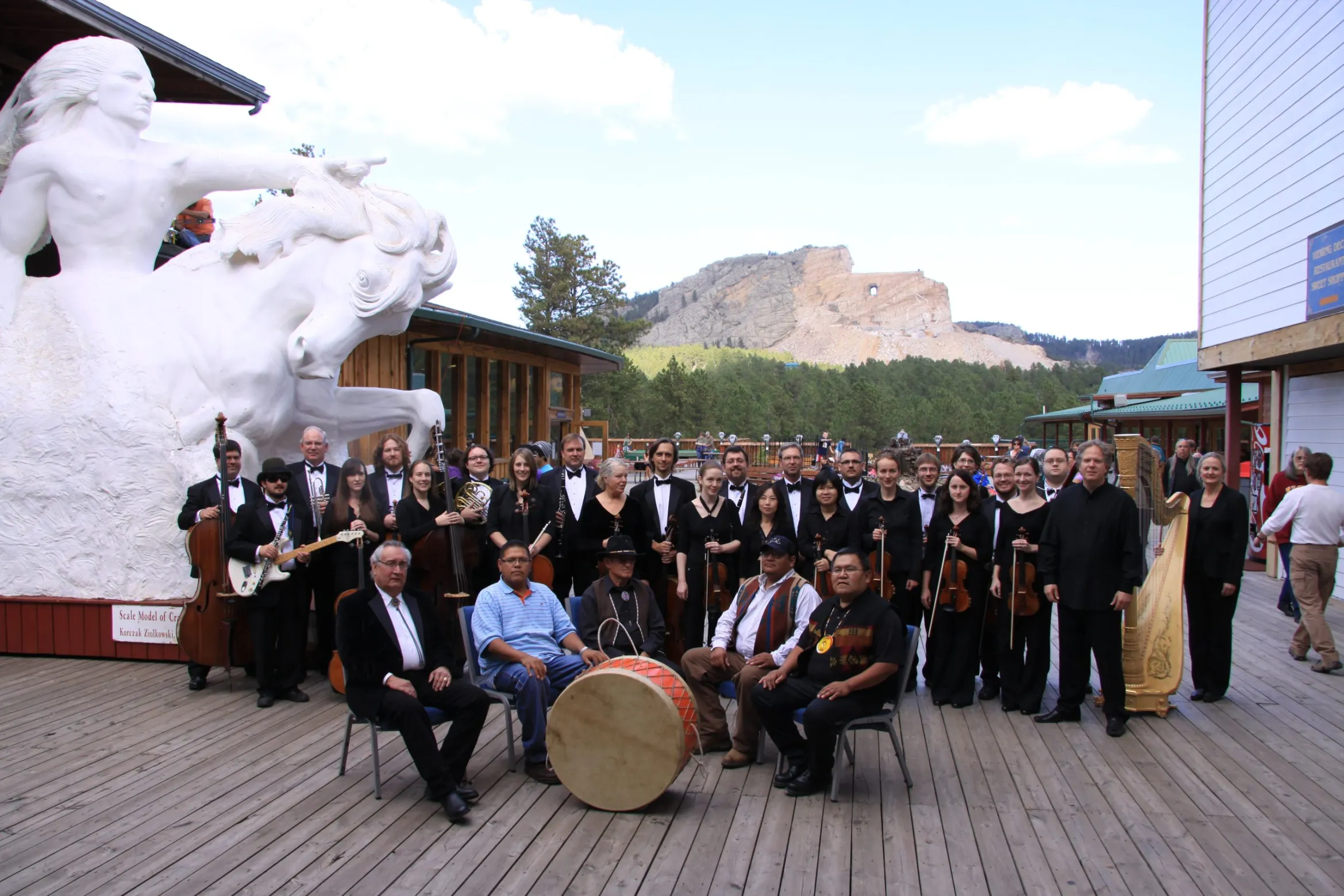This story was originally published in the Daily Yonder. For more rural reporting and small-town stories visit dailyyonder.com.
Emmanuel Black Bear hopes that he and other Indigenous musicians are breaking down negative stereotypes by performing with the South Dakota Symphony Orchestra.
Black Bear, who is Lakota, has been performing with the South Dakota Symphony Orchestra as part of the Lakota Music Project for nearly two decades – since it started.
“I think it gives us an opportunity to show a side of us that doesn’t necessarily make news,” he told the Daily Yonder. “So people don’t get to see us [in] our positive light. We have a beautiful culture, a beautiful way of life.”
By performing with the symphony, Black Bear hopes non-Indigenous people may learn more about the culture, helping to eliminate racism, prejudice, and stereotypes.
“We get to show who we are to non-Native people,” said Black Bear, who is a member of the Lakota Drumming Group. “And it was able to break down – hopefully – break down some of the stereotypes of all my relatives across the state. And so with that, mostly, it brings a little understanding, and it’ll help with racism and prejudice towards our people.”
That’s exactly what Delta David Gier, music director of the South Dakota Symphony Orchestra, had in mind when he formed an idea to create a project working with the Indigenous people living in South Dakota.
But, upon initial introductions at a lunch, Gier said he was met with distrust.
“It was my first lesson in learning how to listen,” he told the Daily Yonder. “Because orchestras are really good at creating programming and implementing programming, not so good at listening and adapting to their communities.”
EMMANUEL BLACK BEAR, MUSICIAN“We get to show who we are to non-Native people. … It brings a little understanding, and it’ll help with racism and prejudice towards our people.”
Geir, who had previously worked in New York, said he brought a conviction with him that an orchestra should service its community uniquely.
Four years passed between the initial meeting and the creation of the project.
“We built it together with these cultural leaders and Lakota, Dakota musicians across the state and we worked really carefully to create a program that would be meaningful to people on both sides of the equation,” Gier said. “People could learn something about each other and we could create understanding between our cultures through the medium of music.”
A typical Lakota Music Project performance consists of two parts: The first part is the Chamber Orchestra and a Native drumming group, or flute player and dancers along with a public discussion about music’s role in each of their respective cultures.
The second part of the program includes new pieces of music that have been commissioned for them to play together with the drumming group or the flute player.
As part of the Project, music composition academies for Native youth to participate in for a week are also offered. Each of the students has varying degrees of expertise. The academies take place around the state.
“At the end of the week, each kid comes out with a piece that they’ve composed for either string quartet or woodwind quintet,” Gier said.
When the symphony goes out on the road, Gier said that they are performing in gymnasiums and community centers, free of charge to the attendees.
“We’ve striven to take out all the barriers to the work itself,” he said. “We don’t want that to be a factor.”
Bryan Akipa is a member of the Sisseton Wahpeton Sioux Tribe and a traditional Dakota Native American Flute player in the Lakota Music Project.
Akipa makes and plays his own flutes for which he has received several honors, including a National Endowment for the Arts National Heritage Fellow in 2016.
Akipa started performing in the 1980s, he said, and throughout the year – including with the Lakota Music Project – it has brought about greater awareness.
“People got interested in it, they would listen,” he said. “They would hear this traditional flute music. So it did seem like it was helping get the culture out.”
